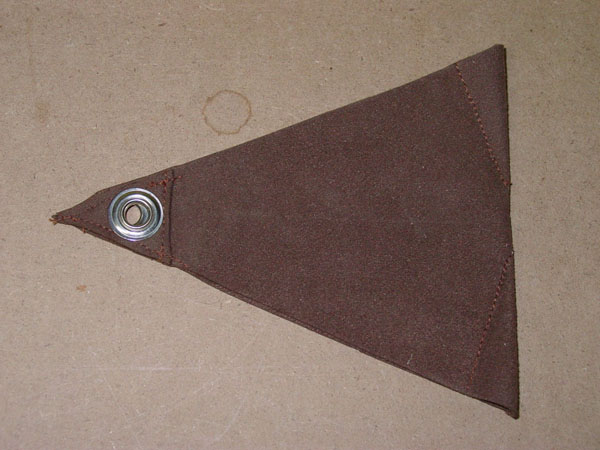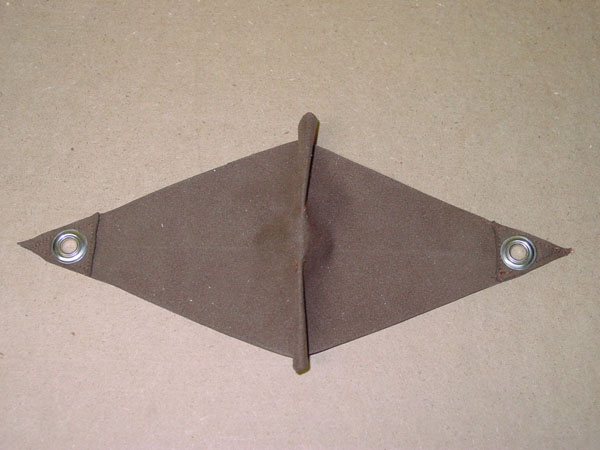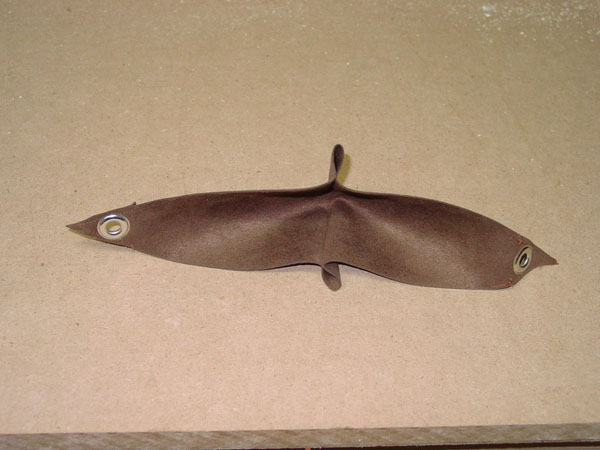Trebuchet and Catapult Pouches
Pouches are an often overlooked, yet very important part of a trebuchet. By the time most people get around to making a pouch, their trebuchet is built, and pretty much ready to fire. Impatience sets in around this time, and the pouch is often just slapped together out of some random scrap of cloth with no though towards shape or size. Then they go out to hurl, and usually something goes wrong. The first shots go backwards, or straight up, scattering the crowd that has gathered to see this strange device fire. Or maybe, by some miracle, the shots actually go forward, but inconsistently, where one will travel at a good trajectory, and the next spikes into the ground 2 feet in front of the trebuchet, with you making no modifications whatsoever between shots. Especially in the latter case, the culprit is most likely a bad pouch.
So what is to be done? Well, if you haven't fired yet, good for you, make the pouch right the first time and save yourself a lot of embarrassment. If the above or something similar has already happened, well, lets get back on track then.
Solid Pouch
We'll start off with a simple solid pouch, and someday we'll get around to putting up some info on net-type pouches. As with all pouches, solid pouches need to be sized for a specific size of projectile. A golf ball pouch will not work to fire a softball with, and the reverse doesn't work too well either. As such, pouches can get pretty big, and big solid pouches tend to act as pretty good sails, slowing down the launch speed, and thus killing range. Therefore, solid pouches usually are not used for launching anything rather large, such as a pumpkin (like the 8-10 pounders used in competition). Also, a big solid pouch needs to be pretty strong, and thus gets heavy fast, also reducing range. However, solid pouches work just fine for golf balls, baseballs, softballs, and any other similarly-sized projectiles.
A pouch needs to have a bit of a belly, so as to prevent the projectile from slipping out the sides (giving that backwards shot), but not so bellied that it holds onto the projectile too hard, often not releasing it (or spiking it into the ground in front of the trebuchet). The same goes for the overall size of the pouch: too small, and the projectile tends to slip out, too big and it may never come out. This is a delicate balance to keep, and can require some trial-and-error to get right. However, we have found a rough set of proportions that has worked well for us, working for a basic diamond-shaped pouch like that found on Ripcord's site. Those dimensions and some pictures now follow.
First of all, start with a piece of sturdy cloth. Leather can work, as can a number of other similar strong materials such as denim (got some old jeans perhaps?) and canvas, though some added work is necessary with these latter materials to prevent them from unraveling. For our baseball pouch, the only solid pouch we use (we shoot nothing smaller anyway), we have had good success with some ultra suede scraps we found. This stuff is light, strong, and as flexible as any other fabric, making it the perfect pouch material. Take the material, and cut it out in a diamond shape, defined by the dimensions seen below (D refers to the diameter of the projectile to be used with this pouch):
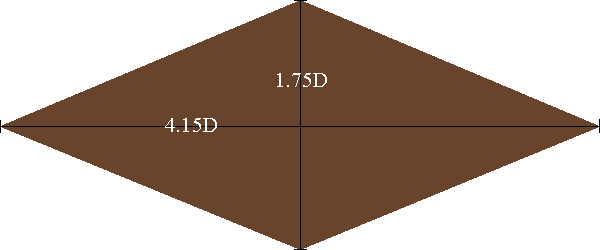
Then punch a pair of holes of an appropriate size for your sling lines, each hole about one inch in from each long point, as shown (you may need to go less than one inch in if it is a small pouch, like one for a golf ball):
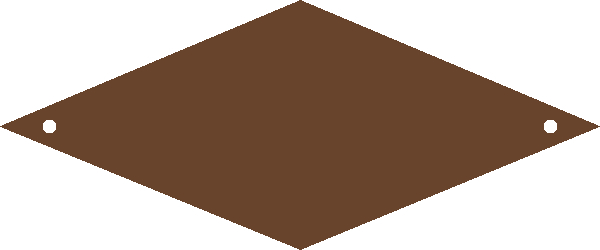
Putting grommets into these holes isn't a bad idea, either, as they lend a little bit more strength to the holes. Now fold the pouch in half along the short length and mark two lines as shown in gray (again, D refers to the diameter of the projectile):
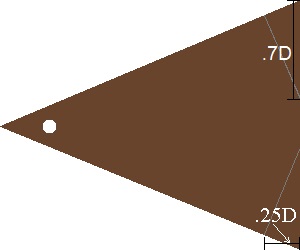
Then you have two choices:
1: Simply stitch along these lines with the pouch still folded OR
2: Cut along these lines, then open the pouch and sew the cut edges together on each side.
Both of these methods achieve the same result, that is to form a belly to hold the projectile in the pouch. Option #1 is simpler, and so is the way we usually do it, but a weight-conscious person will go the way of option #2. One thing that we also do to our pouches is to add small triangles of cloth of the same material as the main pouch to the areas around where the holes go, stitching around the triangle for strength. Then we punch the holes, and fasten the grommets. The end result is something like the following pictures. This is one of our baseball pouches.
